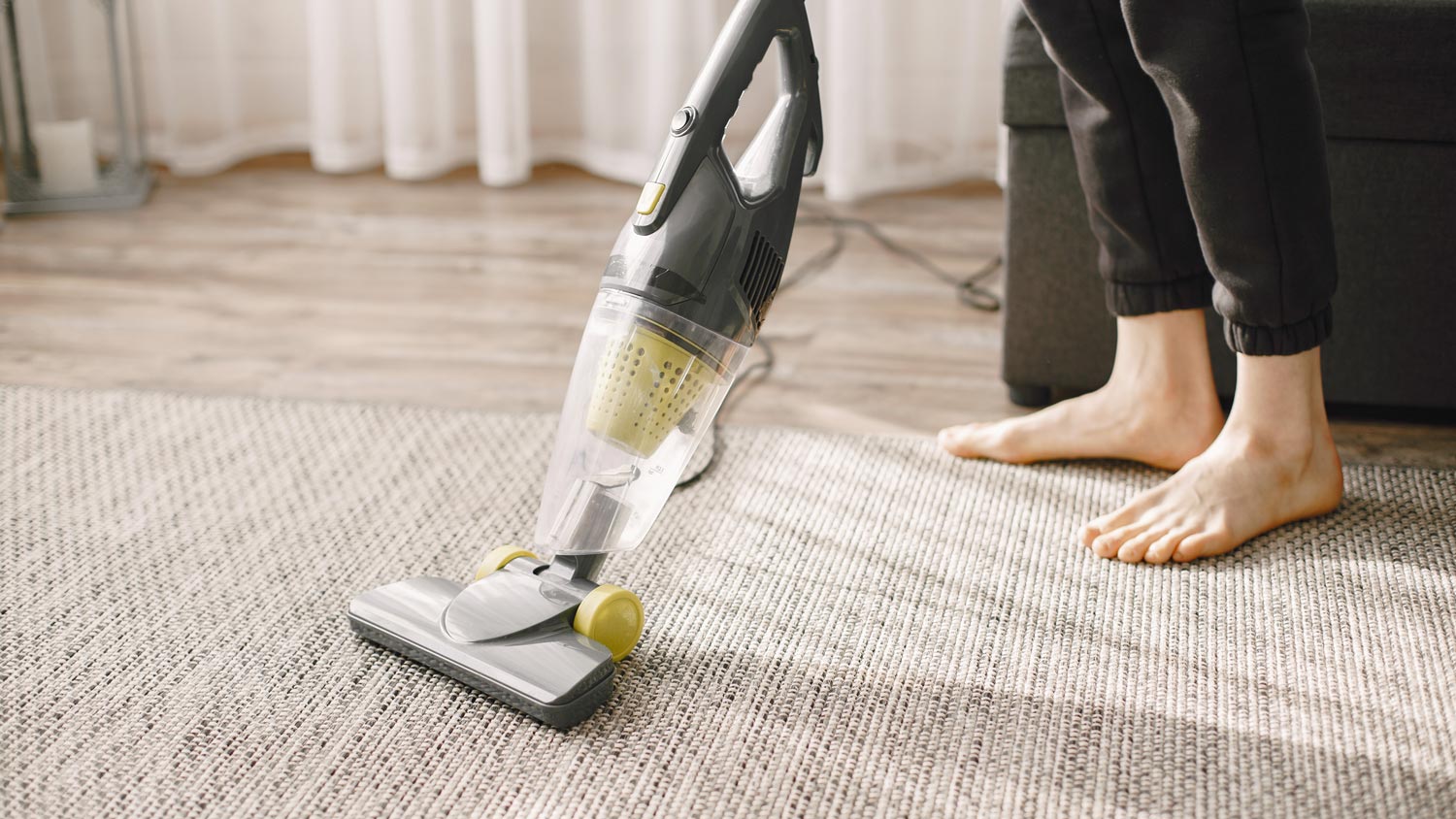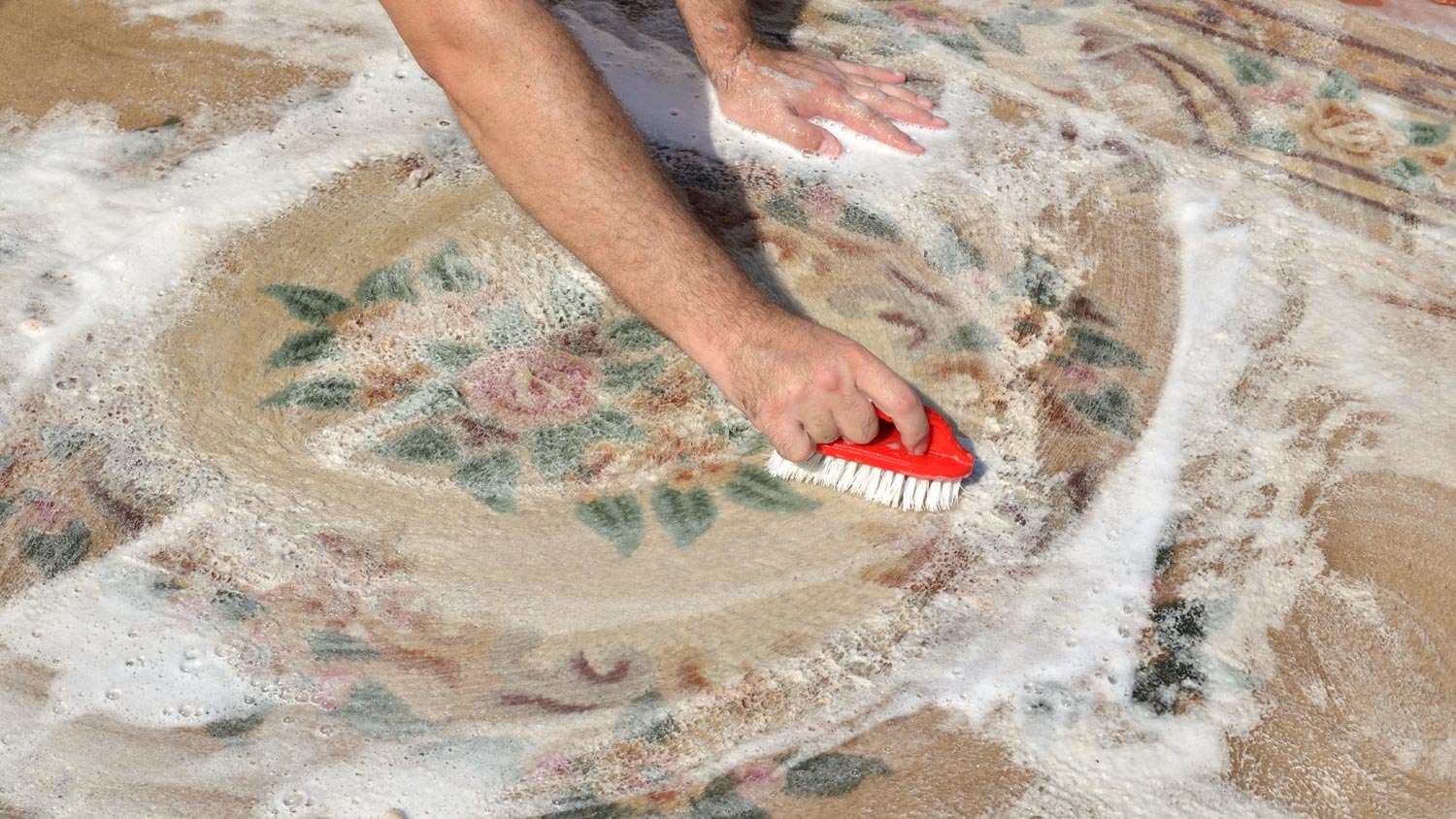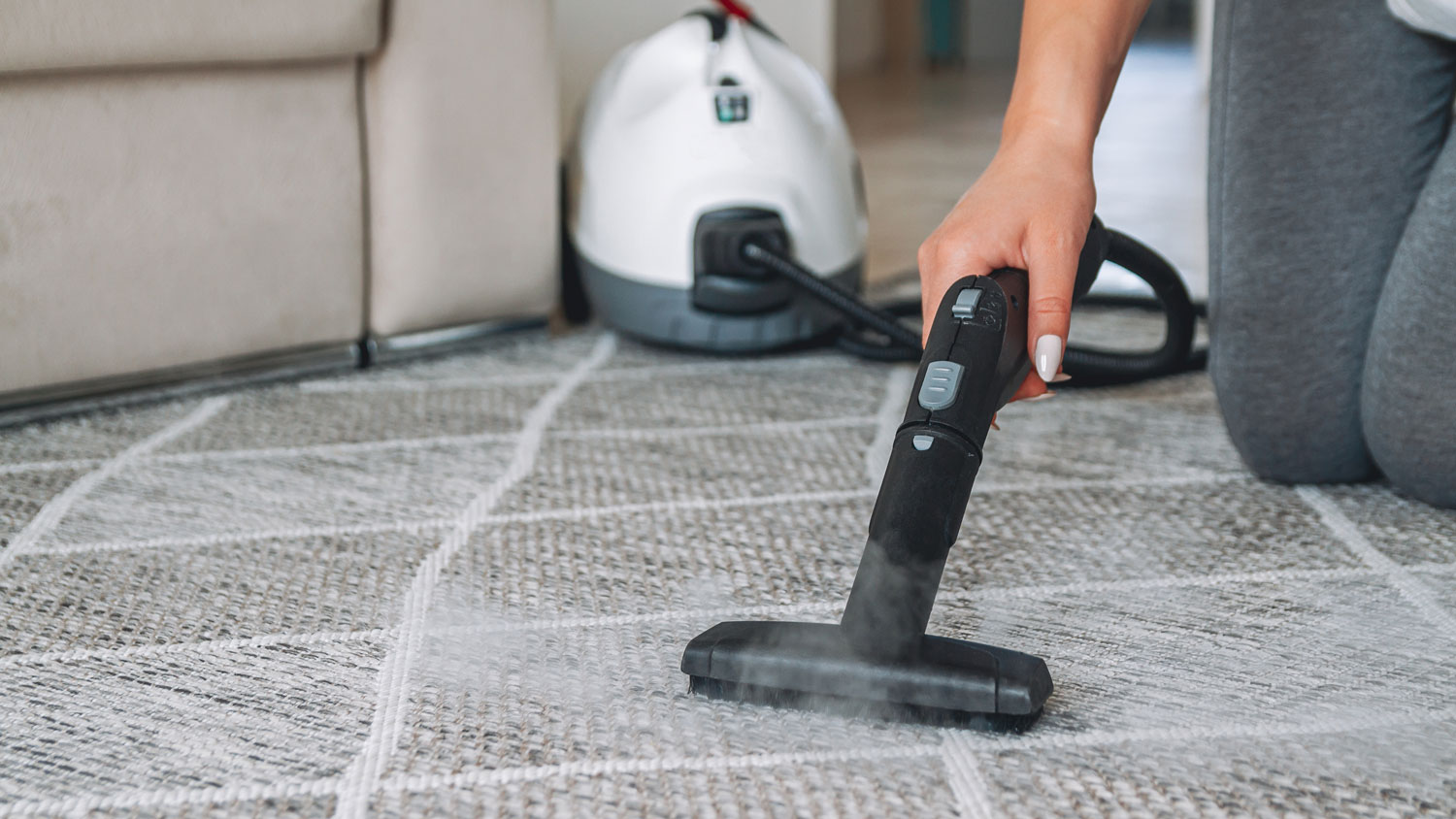The Best Way to Clean Carpet: Pros and Cons of Different Carpet Cleaning Methods
Sometimes you need to go the extra mile in your high–traffic areas


Nothing feels quite as good underfoot as a clean rug or carpet. But sometimes your carpeting needs more than weekly vacuuming to keep that deep-down clean feeling. There are several carpet cleaning methods available, but they aren’t all created equal. We rounded up some of the best techniques for carpet cleaning and found out which is best for your unique floors—some that you can easily DIY and others that may be best left to a pro.
1. The Dry Cleaning Method

The drying cleaning method uses encapsulation to clean carpets—well, the top third of carpets, anyway. In this method, you’ll deploy powder cleaning agents to encapsulate the dirt, making it easy to vacuum up. This method doesn’t fully “clean” your carpet, but the detergent often includes lightening agents and fragrance, giving the carpet a refreshed look and smell.
| Pros | Cons |
|---|---|
| Budget-friendly | Only cleans surface of carpet |
| No drying time | Too much encapsulation can damage carpet |
Who this method is best for: This one is best if you don’t want to wait long for your carpets to dry because it uses powder cleaners rather than liquid. There will only be a brief waiting period before you can vacuum up the powder. It’s also best for carpets that just need freshening up.
2. The Foam Cleaning Method

This one is another encapsulation method just like the dry cleaning method, but here you’ll use foam instead of powder.
Both dry and foam cleaning methods will leave them looking a bit cleaner and smelling just fine, but they don’t actually clean your carpets. That means they can be more like a temporary fix before you can give your carpets a deep clean.
| Pros | Cons |
|---|---|
| Done in under an hour | Doesn’t provide a deep clean |
| No water required | Requires scrubbing |
Who this method is best for: Both the dry cleaning and foam cleaning methods are popular because they don’t require drying time. Which you choose just falls to your preference, especially if your carpet just needs a quick refresh. Both methods cost between $80 and $400.
3. The Bonnet Cleaning Method
If you’ve worked late in a big office building, chances are you’ve seen the bonnet cleaning method at work. Most commonly used on industrial-grade carpet, the bonnet method of carpet cleaning relies on a rotary shampoo machine.
First, a local carpet cleaning pro will cover the carpet in detergent. Then, they will push the rotary machine (which has a giant circular absorbent pad attached to its head) up and down the length of the carpet, buffing out the dirt and absorbing the cleaning agents.
| Pros | Cons |
|---|---|
| Best for surface-level cleaning | Not intended for residential use |
| Fast-drying solution | Requires special equipment |
Who this method is best for: Only use this method in commercial settings. While this is one powerful option, you don’t want to use a bonnet cleaner at home to clean your carpets, as it’s too powerful for your delicate floral rug.
4. The Shampoo Method
You’re probably familiar with the shampoo method and the machines that help deploy it. The machine contains two tanks; one tank is filled with a mixture of cleanser and water, and the other is empty. The machine applies the mixture to the carpet and then vacuums it back up and out of the carpet, depositing the dirty water to the empty tank.
| Pros | Cons |
|---|---|
| More affordable than steam cleaning | Doesn’t provide a deep clean |
| Can DIY | May leave a residue |
Who this method is best for: If you’re having a last-minute get-together and you’re looking for a quick way to refresh your carpets rather than deep-cleaning them, this method is for you. The shampoo method costs between $80 and $400, with the carpet cleaning cost on the higher end if you use a professional.
However, there are some downsides. If you run water and a dash of soap over last night’s pasta bowl, will it get clean? No way. It’s much the same with the shampoo method of cleaning carpets. When you shampoo your hair (or clean that old pasta bowl), you don’t stop with soap and call it a day: you scrub and rinse. These steps don’t happen with the shampoo method. Additionally, over time, the leftover shampoo can also leave a residue.
5. The Hot Water Extraction Method

The hot water extraction method is also known by another term: steam cleaning! A powerful machine covers your carpet in very hot water and cleaning agents. Then it extracts the hot water, cleansers, and all the dirt buried in your carpet.
| Pros | Cons |
|---|---|
| Provides the best deep clean | Pricey |
| Good for those with allergies or pets | Lengthy process |
Who this method is best for: This is the best method for just about every carpet owner. This is the most-effective method of cleaning a carpet, and it is safe for you to use on your carpeting at home, too. You can rent a steam cleaner yourself or hire a pro to steam clean your carpet, expect to spend an average of between $100 and $500.
While this method does require drying time, it is also believed to remove 90% of all the dirt in your carpet. Those numbers simply can’t be beaten, and that goes double if you suffer from allergies or live in a home with cats or dogs and their smells.
6. The Carbonation Method
While it sounds like this method may just be giving a formal name to pouring seltzer on your carpet, that’s not the case. In fact, carbonation cleaning is a lot like hot water extraction with a couple of differences. You’ll use less water at a lower temperature, which injects tiny bubbles into your carpeting. This method will get your carpet just as clean as the hot water method but takes less drying time.
| Pros | Cons |
|---|---|
| Provides a deep clean | Pricey |
| Uses less water than steam cleaning | Carpet needs several hours to dry |
Who this method is best for: If you’ve got allergies or have small children who crawl on the floor, this method may be the right choice for you. It costs between $130 and $600 to have this method used in your home, making it pricier than other options. It’s also best to find a local carpet cleaning company for this task.





- The Best Way to Clean Carpet: Pros and Cons of Different Carpet Cleaning Methods
- How Long Does It Take Carpet to Dry?
- How to Wash Carpets Without a Carpet Cleaner
- How to Hire a Carpet Cleaner to Spruce Up Your Floors
- How to Avoid Carpet Cleaning Scams
- What to Use to Clean Carpets Like a Pro
- How Often Should I Clean My Carpets?
- Dry Carpet Cleaning vs. Steam Cleaning: What's the Difference?
- How to Disinfect Carpet: Facts, Myths, and What You Can Do Yourself
- The Pros and Cons of Professional Carpet Cleaning










